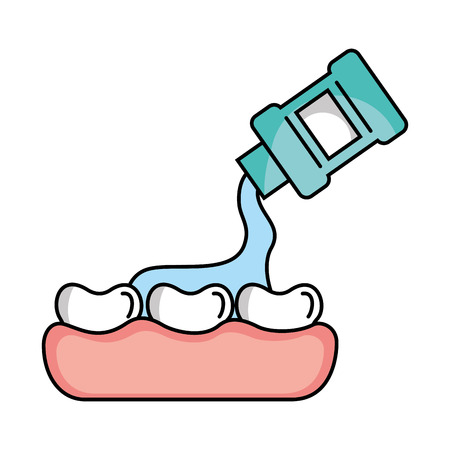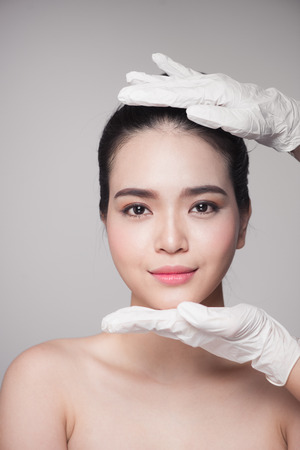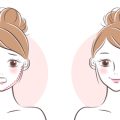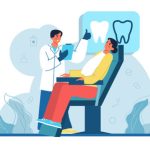1. Initial Consultation and 3D Scanning
What Happens During Your First Invisalign Visit?
Your Invisalign journey starts with an initial consultation at your orthodontist’s office. This first appointment is all about getting to know you and your smile goals. Here’s what you can expect when you walk in:
Smile Evaluation
Your orthodontist will take a close look at your teeth and bite. They’ll ask questions about your dental history, any concerns you might have, and what you hope to achieve with Invisalign. This is a great time to share what you’d like to improve, whether it’s straightening crooked teeth, closing gaps, or fixing bite issues.
Digital 3D Scanning
Forget about those old-school, messy molds! Most modern offices use advanced digital scanners to create a precise 3D image of your teeth. The process is quick and comfortable—your orthodontist simply glides a small scanner over your teeth, capturing detailed images in minutes.
| Traditional Impressions | 3D Digital Scanning |
|---|---|
| Uses putty-like material Can be uncomfortable Takes several minutes Possible gagging sensation |
No goop needed Quick and easy Comfortable process Highly accurate digital images |
Creating Your Personalized Treatment Plan
Using the 3D scan of your teeth, your orthodontist will map out a custom treatment plan just for you. This plan shows how your teeth will gradually move into their ideal positions with each set of aligners. You’ll even get to see a digital preview of your future smile!
This first step sets the stage for a smooth Invisalign experience tailored specifically to your needs and lifestyle. It’s the perfect opportunity to ask questions and get excited about your new smile.
2. Receiving Your Invisalign Aligners
Getting Your First Set of Aligners
After your initial consultation and digital scans, your dentist or orthodontist will let you know when your first set of Invisalign aligners is ready. You’ll usually pick them up at your provider’s office, where they will make sure the fit is just right. Here’s what you can expect during this step:
| Step | What Happens |
|---|---|
| Try-On | Your provider helps you put on your first set of aligners and checks the fit. |
| Instructions | You’ll get tips on how to wear, remove, and care for your aligners. |
| Questions | This is a great time to ask any questions about the process or what’s coming next. |
What It Feels Like to Put Them On
The first time you put on your clear aligners, you might notice they feel snug or tight—that’s normal! Some people say it feels a bit like a firm hug on their teeth. You may also have a slight lisp at first, but most people adjust within a few days.
- Tightness: This means the aligners are working!
- Slight Pressure: A sign that your teeth are starting to move.
- Lisp: Practice speaking or reading out loud to speed up adjustment.
Tips for Adjusting to Your New Aligners
- Wear your aligners 20-22 hours per day for best results.
- If you experience discomfort, try switching to the new set before bedtime so you sleep through the tightest part.
- Stick with soft foods if your teeth feel sensitive in the first couple of days.
- Use Invisalign chewies (small rubbery tools) if provided—they help seat your aligners properly.
- Keep a travel case handy to store your aligners when eating out.
Quick Reminder:
The more consistent you are with wearing your aligners, the better and faster you’ll see results. Stay patient—adjusting gets easier every day!

3. Wearing and Caring for Your Aligners
Once you receive your Invisalign aligners, it’s important to know how to wear, clean, and care for them as part of your daily routine. Doing this right ensures your treatment stays on track and your smile looks its best.
How to Wear Your Aligners
For Invisalign to work effectively, you’ll need to wear your aligners for 20–22 hours every day. Only remove them when eating, drinking anything other than water, or brushing and flossing your teeth. Always place your aligners back in their case when they’re not in your mouth—never wrap them in a napkin or leave them out where they might get lost or damaged.
Quick Guide: Daily Aligner Routine
| Time of Day | What to Do |
|---|---|
| Morning | Remove aligners, brush teeth and aligners, rinse both before putting aligners back in. |
| Meals & Snacks | Take out aligners, store safely in case, eat/drink, brush teeth before reinserting aligners. |
| Evening | Clean aligners thoroughly, brush and floss teeth before bed, wear aligners overnight. |
Cleaning Your Aligners Properly
Keeping your aligners clean is just as important as wearing them. Rinse them with cool water whenever you take them out. Use a soft toothbrush (not the one you use for your teeth) and clear, unscented liquid soap to gently brush away any debris. Avoid using toothpaste—it can scratch the plastic and make aligners look cloudy. Never use hot water; it can warp the material.
Do’s and Don’ts of Aligner Care
| Do’s | Don’ts |
|---|---|
| Rinse after removing Brush gently with mild soap Soak in Invisalign cleaning crystals or denture cleaner occasionally Store in case when not worn |
Avoid hot water Don’t use colored soaps or toothpaste Don’t eat or drink (except water) while wearing aligners Don’t leave aligners exposed outside the case |
Troubleshooting Common Issues
You may notice some discomfort or tightness when switching to a new set of aligners—this is normal and usually goes away in a day or two. If you lose or break an aligner, contact your orthodontist as soon as possible for advice on what to do next. Stick closely to your dentist’s instructions and don’t skip ahead or delay changing to your next set unless advised by your provider.
Your Daily Aligner Checklist:
- Wear aligners 20–22 hours per day
- Remove only for eating, drinking (except water), brushing, and flossing
- Clean aligners morning and night (and after meals if possible)
- Avoid staining foods or drinks while wearing aligners
- Keep regular check-ins with your orthodontist as scheduled
This daily care routine will help keep your treatment on schedule—and keep your smile healthy throughout the process!
4. Regular Check-ins and Progress Tracking
Once you start your Invisalign treatment, regular check-ins with your orthodontist are a key part of making sure everything goes smoothly. These appointments aren’t just about picking up new aligners—they’re also how your provider makes sure your teeth are moving as planned and that you’re on track for a great smile.
How Follow-Up Appointments Work
Your first check-in is usually scheduled about 4 to 6 weeks after you begin wearing your first set of aligners. During these short visits, your orthodontist will:
- Examine your teeth and gums
- Check the fit of your current aligners
- Address any discomfort or issues you may have
- Give you your next sets of aligners if everything looks good
You can expect these appointments to be quick—often less than 30 minutes—unless adjustments are needed.
Your Progress Is Closely Monitored
At every visit, your orthodontist tracks how well your teeth are shifting using digital scans or physical impressions. They compare your progress to your personalized treatment plan, making tweaks if needed. This ensures you get the best results in the shortest possible time.
What to Expect at Each Appointment
| Appointment Number | What Happens | Timeframe |
|---|---|---|
| First Check-In | Initial progress check, answer questions, hand out next aligners | 4-6 weeks after starting |
| Ongoing Visits | Monitor movement, adjust plan if necessary, receive more aligners | Every 6-8 weeks (typical) |
| Final Appointments | Review final results, discuss retainers and post-treatment care | After last aligner set |
When to Switch Your Aligners
You’ll typically wear each set of aligners for about one to two weeks before switching to the next set. Your orthodontist will tell you the exact timing based on how well your teeth are responding. Always follow their instructions closely—even if you’re excited to move forward faster!
If You Miss an Appointment…
If life gets busy and you miss a check-in, contact your orthodontist as soon as possible to reschedule. Keeping up with appointments is important for staying on track with your Invisalign treatment.
5. Completing Treatment and Retention
What Happens When You Finish Your Invisalign Treatment?
Reaching the end of your Invisalign treatment is a big moment! After months of wearing aligners, you’re ready to show off your new smile. But before you celebrate, there are a few important things to know about what happens next.
The Final Checkup
Your orthodontist will schedule a final checkup to make sure your teeth have moved according to plan. They’ll check your bite and alignment, and may take new scans or X-rays. If everything looks perfect, you’ll officially be done with active treatment!
Retainers: Keeping Your Smile in Place
Once your teeth are straight, it’s time to focus on keeping them that way. Without retention, teeth can shift back to their old positions over time. That’s where retainers come in—they help maintain your results for years to come.
Types of Retainers
| Retainer Type | Description | Pros | Cons |
|---|---|---|---|
| Clear Plastic (e.g., Vivera) | Molded from clear plastic, similar to Invisalign aligners | Discreet Comfortable Custom fit |
Can get lost easily Needs replacing over time |
| Hawley Retainer | Acrylic base with metal wires that wrap around the front teeth | Durable Adjustable Long-lasting |
More noticeable May affect speech at first |
| Fixed (Bonded) Retainer | A thin wire glued behind the front teeth | Permanently in place No need to remember to wear it |
Difficult to clean May break if not careful |
How Long Do You Need to Wear a Retainer?
Your orthodontist will give specific instructions based on your needs. Most people wear their retainer full-time for the first few months after treatment, then transition to wearing it only at night. For best results, many dentists recommend nighttime retainer use for life.
Tips for Maintaining Your New Smile
- Wear your retainer as directed: Skipping days can cause teeth to shift.
- Keep retainers clean: Rinse daily and brush gently with cool water.
- Avoid heat: Hot water or leaving retainers in a car can warp plastic types.
- Store safely: Always keep your retainer in its case when not in use.
- Visit your dentist regularly: Schedule routine checkups and let them know about any issues with your retainer.
Your Smile Journey Continues
The end of Invisalign is really just the beginning of enjoying your confident new smile. With proper care and commitment to retention, you can keep those results looking great for years ahead!


